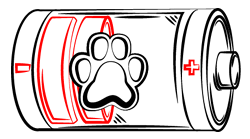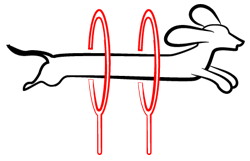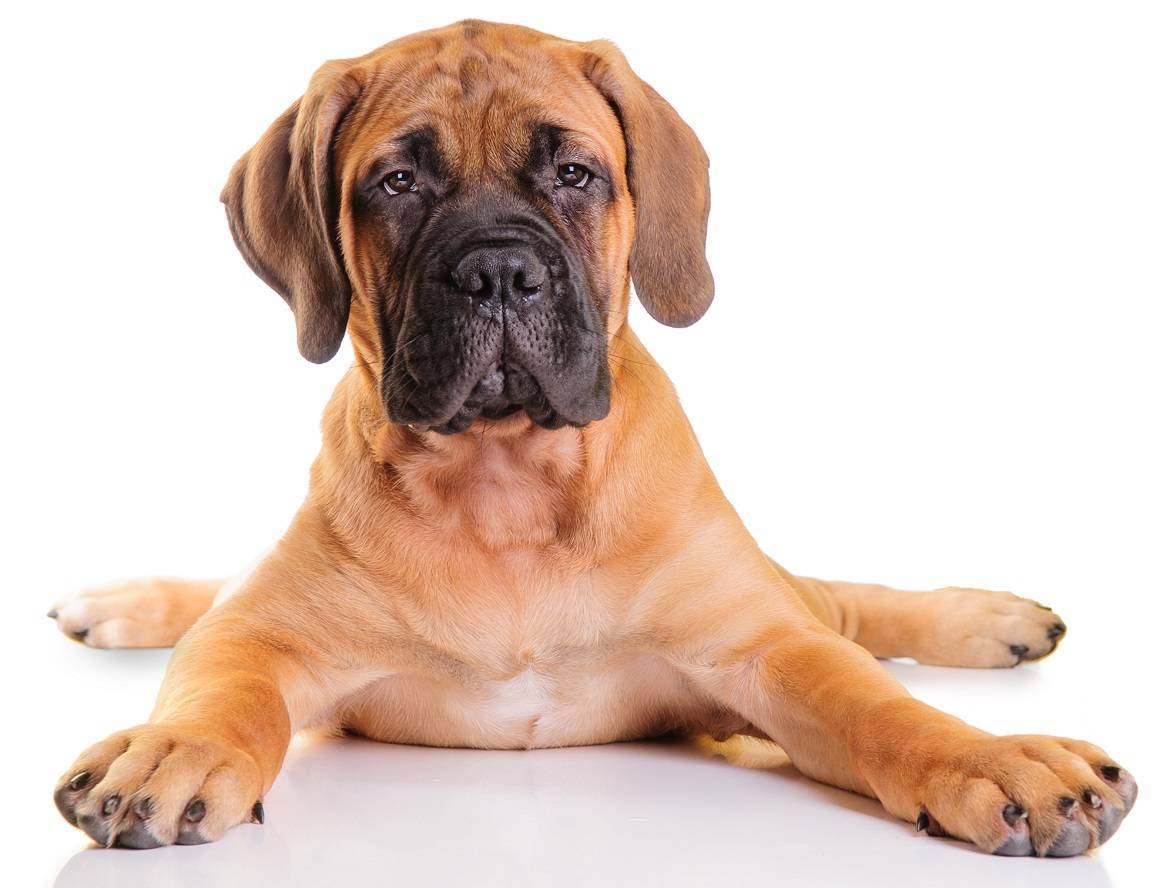
Paws ‘N’ Pups Quickview
Size
| Energy Level
| Trainability
| Paws ‘N’ Pups Rank
|
Characteristics
| Physical Characteristics: Height: 24-27” Weight: 99-130 lbs. Energy Level: Moderate | Colors: The American Kennel Club recognizes the Bullmastiff in the following colors:
Black masks are common among all colors. |
| Health & Longevity: 8-10 years Breeders screen for the following conditions:
Cystinuria is an inherited kidney defect which leads to kidney stones. Cancers exist in the breed, as does gastric torsion (bloat), a life-threatening condition if immediate veterinary intervention is not sought. During periods of growth, some Bullmastiffs experience Panosteitis, commonly referred to as “growing pains”. It is usually self-limited but the discomfort produced can range from mild to severe. Allergies and skin problems are known, and Bullmastiffs are prone to torn ACL’s (anterior cruciate ligament), which require orthopedic surgery to repair. | |
Temperament & Train-ability
Originally developed to work as guardians of English estates, Bullmastiffs are usually mild mannered, self assured and serious. Their formidable appearance is usually sufficient, but once aroused, they are fearless, strong and fast, and seldom back down. The rest of the time, they are loving family companions. Naturally protective and territorial, Bullmastiffs are often aggressive to dogs of the same sex, and strange animals will likely not be accepted. A very secure yard is necessary or his natural territoriality will be a problem. Strong and stubborn, preferring to do things his way, a Bullmastiff is not well suited to novice or timid owners unprepared for the responsibility of managing him. They are a bit codependent and spending long hours alone will likely result in behavior problems (destruction, digging). Bullmastiffs cannot tolerate temperature extremes, and will need a coat in the winter and a spot in an air-conditioned house in the summer.
The Bullmastiff’s exercise requirements are moderate, easily satisfied with two 30-minute walks a day. Bred to be silent watchdogs, Bullmastiffs aren’t usually big barkers. Some can be successful in apartments or condos as they are naturally quiet and mellow; however, they must be well-socialized dogs that do not possess a high degree of territoriality. Additionally, they must get their outings every single day. Bullmastiff adults can work for some working households so long as their days alone are not 9-12 hours. Usually good with children, your Bullmastiff will need careful socialization to learn appropriate behavior around children. Likewise, your children must be taught how to properly interact with dogs. Never allow children to sit on, attempt to ride or pull ears, etc. Children should be taught how to recognize when a dog needs a break and give them space.
Young Bullmastiffs can be quite rowdy and bouncy, but usually settle down by about 2 years of age. Clean dogs by nature, Bullmastiffs are usually easy to housetrain. However, be prepared for copious amounts of drool, slobber and gas. Many Bullmastiff owners keep “slobber rags” in every room of the house.
Bullmastiffs require a great deal of early and ongoing socialization to enable them to move through life without seeing threats everywhere. It allows them to be relaxed, confident and safe. This socialization process begins in puppyhood and must continue into maturity. This is a sensitive yet independent breed that would rather do things their own way. Using forceful or punitive methods to teach your Bullmastiff will not work. Choose positive reinforcement methods, be patient and consistent, and your Bullmastiff will meet you halfway. These low-key dogs are not known for their competitive edge in dog sports, but many have competed, and some have found their niche as therapy dogs.
Grooming
Bullmastiffs have an easy care smooth coat. They do not shed excessively and their grooming requirements are simple weekly brushing with a curry or soft bristle brush will remove any dead coat and keep the skin healthy. During their spring and fall coat “blow”, daily brushing will be needed. Care should be taken to keep any wrinkles and skin folds clean and dry or they can become havens for bacteria to grow. Ears must be cleaned regularly, and toenails will need to be trimmed, as most Bullmastiffs will not wear their nails down even if walked on concrete. Teeth should also be checked and cleaned as necessary.
Diet
The amount of food a Bullmastiff will require can vary depending on age, activity level, and type of food fed. On average, they will eat 3-5 cups of food daily, fed in two meals; free feeding should be avoided. Many Bullmastiffs are prone to overeating and weight gain, which should be avoided by carefully monitoring food intake. A high quality food should be fed, and one formulated for giant breeds is recommended. A constant supply of fresh, clean water must always be available. Bullmastiffs are sloppy drinkers and usually leave lots of slobber behind; water bowls will likely need rinsing several times a day.
Looking for a Bullmastiff?
 Find A Bullmastiff Breeder |  Bullmastiff Puppies For Sale |  Adopt A Bullmastiff |
Cost
Bullmastiffs run from $700 up to $2,000. Adopting a rescue dog is an option many prefer, in order to give a home to a dog in need. Whether you acquire a dog from a breeder or rescue, do your homework to be assured that the temperaments of the dogs are tested and sound.
Ongoing expenditures include the typical supplies, food, and regular vet visits. Additionally, you may need to invest in an extra supply of chew and food-dispensing toys to help satisfy your Bullmastiff’s stimulation needs. Remember, too, everything costs more with a large dog; beds, the amount of food needed, as well as veterinary procedures. Don’t forget to consider whether your automobile can safely accommodate an adult Bullmastiff.
Paws ‘N’ Pups Ranking
Paws ‘N’ Pups ranks every breed out of 4 with 1 being easiest to integrate into your life and 4 being the toughest – The lower the ranking the better.
Ranking takes into account a few basic factors such as cost, skill level needed, high vs. low maintenance, and how critical regular training is to success. The Bullmastiff rates a 3.5; the skill level and amount of time and energy required to raise and live with a Bullmastiff make them a challenging breed to own.
Breeds Similar To Bullmastiff
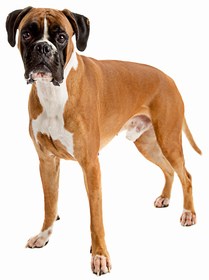 Boxer |  Rottweiler | 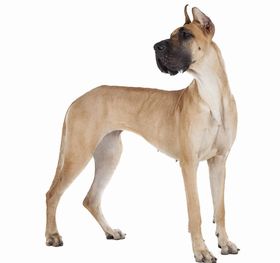 Great Dane | 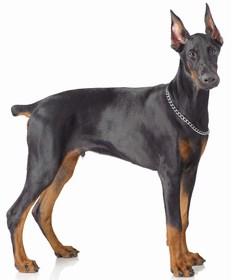 Doberman Pinscher |


